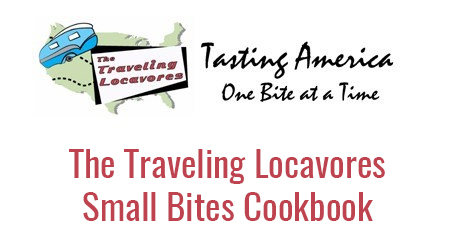It had been many years since my last visit to the Morikami Museum and Japanese Gardens. So in June, while we were visiting friends and family in South Florida, my girlfriends invited me to spend the day there, I jumped at the chance!

The Morikami Museum and Japanese Gardens transport you to Japan without leaving Florida!
The only other time I had been to Morikami Museum and Japanese Gardens was to cater a wedding reception there way back in 1990. It was a very casual reception that was under a pavilion with picnic tables. I remember that we cooked the food on a charcoal grill, the setting was rustic but the surrounding gardens were gorgeous. Sadly, I was far too busy with the event to meander through the property.

Even a single tree stands out in these extraordinary gardens.
If I had been free to wander the grounds back then, I would have returned waaaaay sooner to enjoy the splendor of the Japanese Gardens there. But I was so happy to enjoy a balmy June day with life-long friends.
Morikami Museum and Japanese Gardens
History

The fabulous Bonsai Exhibition at Morikami Museum and Japanese Gardens
You will be surprised to discover that there is a century-old connection between Japan and South Florida. This is where a group of young Japanese farmers created a community intended to revolutionize agriculture in Florida.

A trio of Beautiful Bonsai Trees
Way back in 1904, Jo Sakai, a recent graduate of New York University, returned home to Miyazu, Japan. His plan was to organize a group of pioneering farmers and lead them to what is now northern Boca Raton. With an assist from the Model Land Company, which was a subsidiary of Henry Flagler’s East Coast Railroad, they formed a farming colony they named Yamato, an ancient name for Japan.
Colony established

Anyone know what kind of bird this is? Isn’t it cool?
The Japanese colony was established in early summer of 1905 on property previously occupied by the Keystone Plantation. It was located in the tiny community then known as Wyman, situated halfway between Delray Beach and Boca Raton. Access to the plantation, and later the colony, was available from Dixie Highway by a primitive railroad crossing at what has since become known as Yamato Road. Plantation lands extended north and south of the future road about one mile in either direction. The western boundary of the property was in the vicinity of present-day Interstate 95. The colonists soon built homes on the property, west and south of the crossing into the colony land. Later a railroad station and a school were established nearby.
Unfortunately, the ultimate results of their crop experimentation were disappointing and the Yamato Colony never met its goals. By the 1920s the community, which had never grown beyond 30 to 35 individuals, gave up its dream, and one by one, the families left the area for other parts of the United States or returned to home to Japan.
For several years the few remaining Japanese settlers grew pineapples for shipment to markets in the north. By the end of 1910, competition from Cuban pineapples caused many area growers, including Yamato colonists, to turn to winter vegetables. Not many of the settlers remained in Yamato for very long, but those who did sometimes returned to Japan briefly to marry and bring wives to the colony. And those families grew. Ironically, prosperity during World War I and the land “boom” of the 1920s resulted in many of the settlers leaving the area. By the start of World War II, only a handful of Japanese remained. In May of 1942, the farmland in the Yamato area that was still owned by Japanese settlers was confiscated by the U. S. government for a military installation. While the pioneering community of Japanese settlers is gone forever, Yamato’s name lives on today.
Founder George Sukeji Morikami
Morikami Museum and Japanese Gardens Mission

A beautiful Blue Heron looking for lunch.
According to their website: “The mission at Morikami Museum and Japanese Gardens is to engage a diverse audience by presenting Japanese cultural experiences that educate and inspire.”
Since its opening in 1977, Morikami has been a center for Japanese arts and culture in South Florida. They host rotating exhibitions, tea ceremonies are performed monthly (October through May) in the Seishin-an tea house, there are educational outreach programs with local schools and organizations, and Japanese traditional festivals are celebrated for the public several times a year, The Morikami Museum and Japanese Gardens continuously strives to spread appreciation for the living culture of Japan.
Morikami Museum
The original building, which is named the Yamato-kan, is modeled after a Japanese villa. It features a circle of exhibition rooms surrounding an open-air courtyard with a dry garden of gravel, pebbles and small boulders. The Yamato-kan offers a permanent exhibit chronicling the history of the Yamato Colony.
The main museum building opened in 1993 to meet popular demand for more programming and more versatile facilities. It was also build to satisfy the needs of a growing community surrounding it. The museum’s architecture was inspired by traditional Japanese design. The building features three exhibition galleries, a 225-seat theater, an authentic tea house with viewing gallery, classrooms, a museum store, the Cornell Café and lakeside terraces for a panoramic view while dining. The Morikami Collections house more than 7,000 Japanese art objects and artifacts, including a 500-piece collection of tea ceremony items, more than 200 textile pieces and fine art acquisitions.
Gardens

Such tranquil serenity that all cares seem to melt away while enjoying the Japanese Gardens at Morikami!
There are 16 acres that surround Morikami’s two museum buildings. On this acreage are expansive Japanese gardens with strolling paths, resting areas, a world-class bonsai collection and lakes teeming with koi and other wildlife. The wider 200-acre park features nature trails, pine forests and picnic areas.

We found such beauty in simplicity.
In 2001, Morikami completed a major garden expansion and overhaul. The new gardens reflect major periods of Japanese garden design, from the 8th to the 20th century. these Japanese Gardens serve as an outdoor extension of the museum. The gardens were designed by Hoichi Kurisu. Each garden is intended to express the character and ideas of a unique counterpart in Japan without attempting to duplicate those gardens and seamlessly flow together as one garden. Morikami
Seishin-an Tea House

Lush plants of green with bright red thrown in for good measure along with a slightly hidden waterfall.
The Seishin-an Tea House was designed to promote harmony, respect, purity and tranquility. It is fashioned after the sōan (literally, “grass hut”) style tea house. A Sōan is a small tea house that is unpretentious and rustic by design. Seishin-an is a little larger than a typical sōan tea room to allow the performance of both sōan and hiroma (large-room) style tea ceremonies.The tea house was designed by Sō’on Yamamoto, a local teacher from the Omote-Senke tea school, in consultation with Eko Yamashita, an Omote-Senke grand master. He was also the abbot of Kōetsuji, a Kyōto temple known for its concentration of 16th and 17th century tea houses. The name Seishin-an (“pure-forest retreat”), was chosen by 14th generation Omote-Senke headmaster Jimyōsai Sen, partly because the written Japanese character mori, from the name of George Morikami, is pronounced as shin in Seishin-an.
About Tea Ceremony
Cornell Café

Lunch at the Cornell Café Morikami Museum and Japanese Gardens
Photo Credit: Website

The Four Amigas – From left: Myrle, Jackie, Sheri and Me – and a Happy Buddha
We four amigas finished off our day at the Morikami Museum and Japanese Gardens the perfect way! We had lunch at the Cornell Café. Due to Covid there was plenty of outdoor seating. And fortunately for us, there was an air conditioned tent for “indoor seating” that no one else was using. The experience of dining in the chill air and still being able to overlook the tranquil gardens was superb. As was the Pan-Asian menu. Two of us enjoyed the Seared Tuna Bowls filled with tender ahi tuna served with seasoned sushi rice and wakame (seaweed) salad. The other two had the Vegetarian Bento Boxes which were filled with white rice, sautéd vegetables, vegetable dumplings, Asian eggplant in garlic sauce, vegetarian spring roll, tofu, vegetarian sushi rolls. The portions were huge and the flavors were outstanding!!!










Trackbacks/Pingbacks